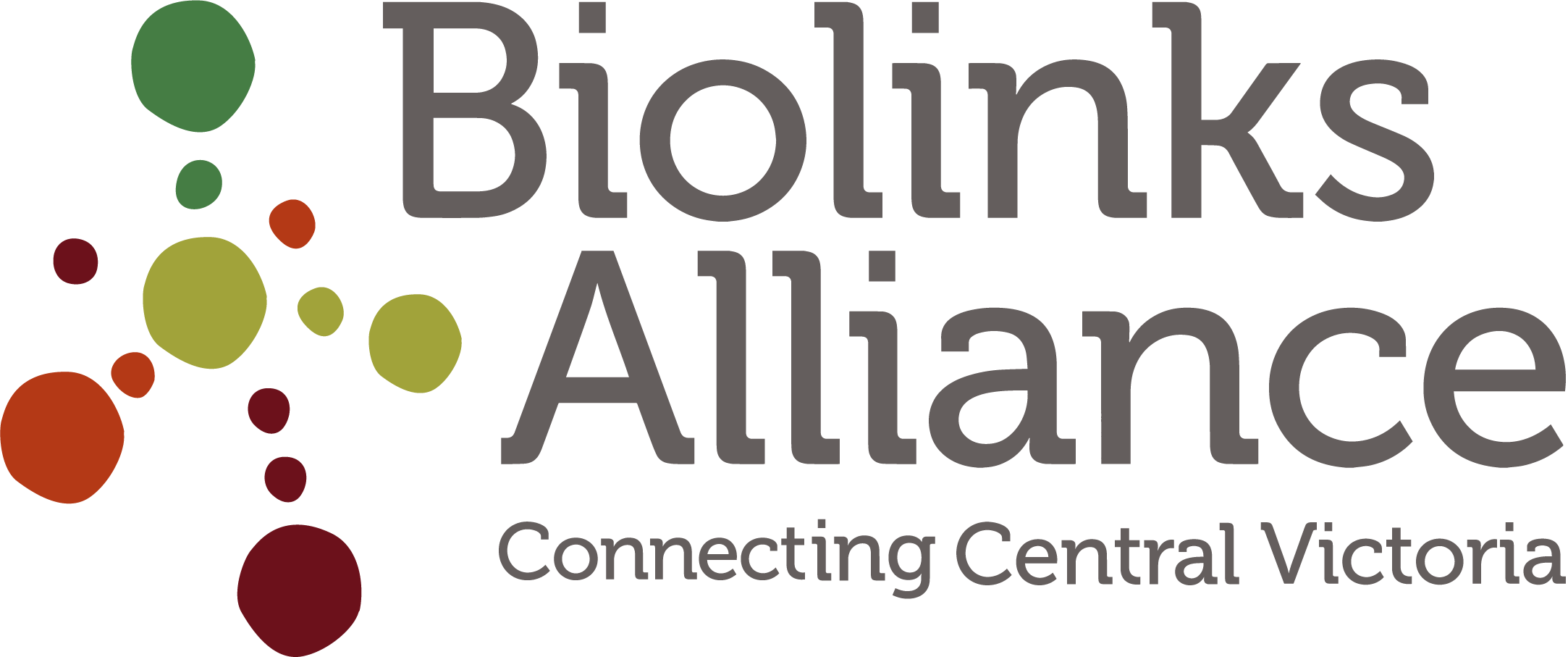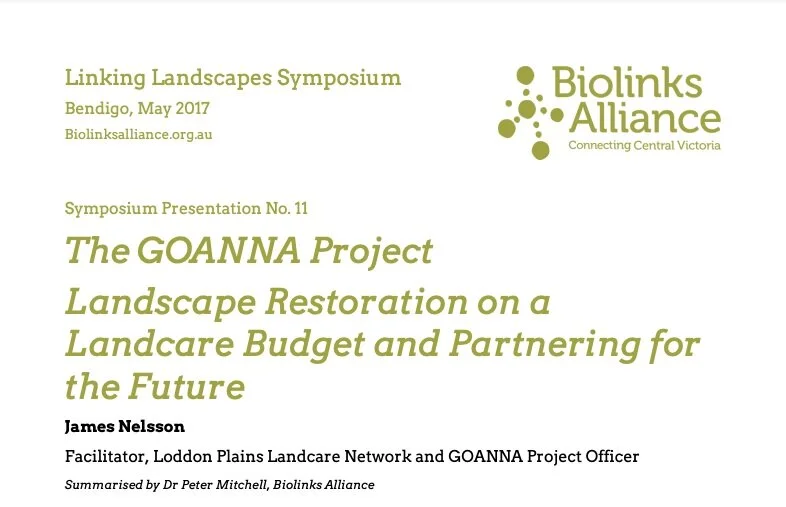Learn about the work that goes into the planning of an ambitious landscape-scale restoration project. You’ll be introduced to the Deep Creek Biolink project, a collaborative effort between Biolinks Alliance, Upper Deep Creek Landcare Network, Melbourne Water, Macedon Ranges Shire Council and Upper Maribyrnong Catchment Group.
Read MoreLearn what we’ve been up to in the past year and how you can play a role in our ground-breaking initiative - Glideways in Central Victoria. You’ll be introduced to the glider species found across our region, why conserving them and their habitat is so vital, and learn about local projects that demonstrate simple, strategic and effective approaches to helping protect them.
Read MoreHear from our guest speaker Ross Goldingay from Southern Cross University about his research with Karen Thomas and Darren Quin over a 6-year period near Bendigo in this intriguing webinar. Together, they monitored nest boxes installed through a 600-ha block of forest with natural tree hollows in short supply.
Read MoreIn our second webinar about ‘rewilding’, as part of our 2024 Monthly Webinar Series, hear from Derek Sandow who is the Marna Banggara Project Manager at the Northern and Yorke Landscape Board.
Read MoreHear about ways to protect and restore these elders of our lands. At this webinar, we'll together look at: Why are Large Old Trees so important? What are the dire threats they face? How can we together urgently help them?
Read MoreThe captivating and incredibly biodiverse Wombat Forest is just 50km west of Melbourne. At this webinar, meet the people in the know when it comes to the plethora of precious wildlife, including Greater Gliders, Brush-tailed Phascogales, Barking Owls and Mountain Skink (all of which are threatened with extinction) that call the forest home.
Read MoreBiolinks Alliance Executive Director Dr Sophie Bickford presents at the 2022 Bendigo Sustainability Festival.
Read MoreNewham Landcare has produced this 5 minute video which promotes the important role of the Cobaw Biolink in enhancing the connections between Mount Macedon and the Cobaw Range on both private and public land. This video aims to engage landholders and residents and make them aware that their contribution, no matter how big or small, is environmentally vital. Protecting existing high quality native vegetation and creating connectivity in the biolink will help native plants and animals adapt to climate change. Spotlight surveys on habitat-rich roadsides round Newham found more animals present in the Cobaw Biolink than during similar surveys on Mount Macedon.
Read MoreHear our expert panel of speakers discuss how to adequately design and implement surveys and monitoring for Squirrel Gliders
Read MoreBiolinks Alliance Greater and Squirrel Glider 2020 Symposium keynote by Rodney Van Der Ree - originally presented as part of the 2019 TreeNet conference
Read MoreA part of Biolinks Alliance strategic plan to enhance landscape repair across Central Victoria, local filmmaker Joshua Tyler produced this short documentary outlining the importance of connected habitat via wildlife corridors.
Read MoreRegent Honeyeaters are endangered due to loss of woodland habitat, but a combination of habitat restoration, captive releases, monitoring and research, and community involvement is working towards recovery of this and other woodland species.
Read MoreWith insects declining around the world, studies on the effects of habitat loss and fragmentation in agricultural landscapes provide an explanation for the decline and suggest implications for restoration.
Read MoreJim’s summary brought together four themes from the Symposium. Connectivity has many dimensions in aquatic systems: along streams and across floodplains, between surface and groundwater, across time and across cultures. Resilience and resistance are features of the biological systems and the people who care for them. Solutions are available and local solutions all count in the larger landscape. And finally, we have choices about the future of our landscapes – but need to think big.
Read MoreInka's recently completed PhD showed how important clusters of connected wetlands were for brolga chicks before they fledged and how wetland connectivity is important for the large scale movements between south western Victoria and South Australia.
Read MoreMichelle spoke about the many seasonal wetlands scattered across south-western Victoria. Agriculture is having a growing impact on the connectivity and biodiversity of these wetlands. But her studies have also shown that wetlands are adapted to cycles and, thanks to persistent seed banks, can come back from moderate and short-term disturbance, with grazing as an important management tool.
Read MoreNick spoke of the impact of small dams in the upper catchments on the persistence of stream flows and waterholes of many streams across Victoria in dry times. Loss of continuity along streams threatens the survival and breeding of many fish and other aquatic animals. Protection of high-quality habitat is critical for conservation but there are also solutions that can improve flows from small dams.
Read MoreConnecting habitat over large scales is not a pipe dream. Hear about his experiences in Africa and the US and how we can re-connect fragmented habitats across central Victoria.
Read MoreBuilding biolinks using marketing instruments. Paul Dettman and Jeroen van Veen
Biodiversity and carbon markets and conservation-focussed agriculture are restoring and connecting habitat in Victoria.
Read More
The GOANNA Project - Landscape restoration on a Landcare budget and partnering for the future. James Nelsson
GOANNA - "Group Organising Activity Nurturing Natural Assets" - how partnering is acheving ecological outcomes.
Read More



















